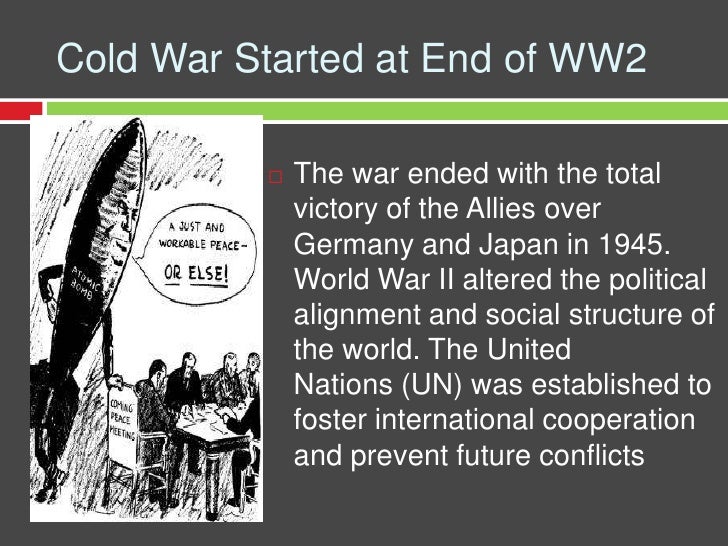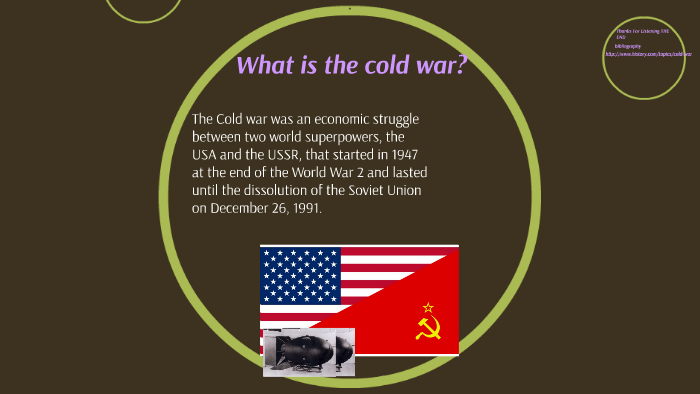
The Cold War was a political and military standoff between the United States and the Soviet Union that lasted from the end of World War II until the early 1990s. The conflict was characterized by a state of tension and hostility between the two superpowers, although direct military action was avoided. The Cold War had a profound impact on world history and the global geopolitical landscape, shaping international relations and influencing the course of world events for decades.
Origins of the Cold War

The origins of the Cold War can be traced back to the end of World War II and the division of Europe into two spheres of influence: the capitalist West, led by the United States, and the Communist East, led by the Soviet Union. The Soviet Union sought to spread communism throughout the world, while the United States sought to contain it. The two superpowers engaged in a global struggle for dominance, with each side competing for influence and seeking to undermine the other.
The Truman Doctrine and Marshall Plan

In 1947, President Harry Truman announced the Truman Doctrine, which stated that the United States would provide military and economic aid to countries threatened by communism. This policy was designed to contain Soviet expansion and limit the spread of communism. The following year, the United States launched the Marshall Plan, which provided economic aid to Western European countries to help rebuild after World War II. These policies were seen as a direct challenge to Soviet influence and led to an increase in tensions between the two superpowers.
The Berlin Blockade and Airlift

In 1948, the Soviet Union blockaded the city of Berlin, which was located in the Soviet-controlled portion of Germany. The blockade was an attempt to force the Western powers to withdraw from Berlin, but instead, the United States and its allies launched a massive airlift to bring supplies to the city. The Berlin Airlift lasted for 11 months and was a major victory for the United States, demonstrating its commitment to defending its allies and resisting Soviet aggression.
The Korean War
In 1950, North Korea invaded South Korea, sparking a conflict that would last for three years. The United States and its allies supported South Korea, while the Soviet Union and China supported North Korea. The Korean War was a major proxy battle in the Cold War and demonstrated the willingness of both superpowers to engage in military action to defend their interests.
The Cuban Missile Crisis

In 1962, the United States discovered that the Soviet Union was installing nuclear missiles in Cuba, just 90 miles from the United States. President John F. Kennedy demanded that the missiles be removed and imposed a naval blockade on Cuba. The Soviet Union agreed to remove the missiles in exchange for a U.S. promise not to invade Cuba and to remove U.S. missiles from Turkey. The Cuban Missile Crisis was the closest the world ever came to nuclear war and was a major turning point in the Cold War.
The Arms Race

Throughout the Cold War, both the United States and the Soviet Union engaged in an arms race, building up their nuclear arsenals and developing new weapons systems. This arms race was fueled by a fear of mutual destruction and a desire to maintain military superiority. The arms race had a significant impact on the global economy and contributed to the development of new technologies.
The Space Race

The Cold War also fueled a competition between the United States and Soviet Union to achieve dominance in space. The Soviet Union launched the first satellite, Sputnik, in 1957, and the United States responded by launching its own satellites and eventually landing astronauts on the moon in 1969. The Space Race was a symbol of technological prowess and a source of national pride for both superpowers.
The End of the Cold War

The Cold War came to an end in the late 1980s and early 1990s, as the Soviet Union began to undergo political and economic reforms. The fall of the Berlin Wall in 1989 was a symbolic moment of the Cold War's end, and the dissolution of the Soviet Union in 1991 marked the definitive end of the conflict. The end of the Cold War had a profound impact on world history and created new opportunities for international cooperation and diplomacy.
Conclusion
The Cold War was a defining period in world history, characterized by a state of tension and hostility between the United States and the Soviet Union. The conflict had a profound impact on the global geopolitical landscape and influenced the course of world events for decades. Although the Cold War is over, its legacy continues to shape international relations and the global political climate today.